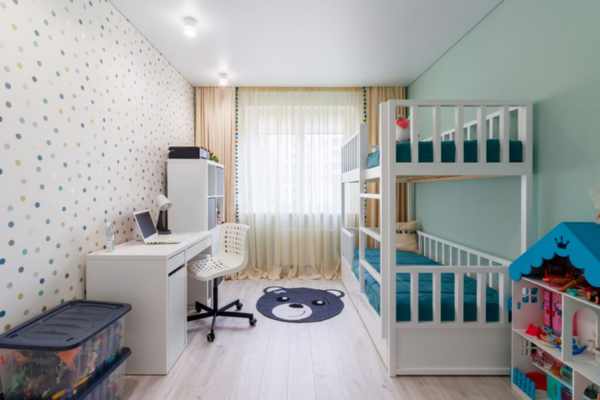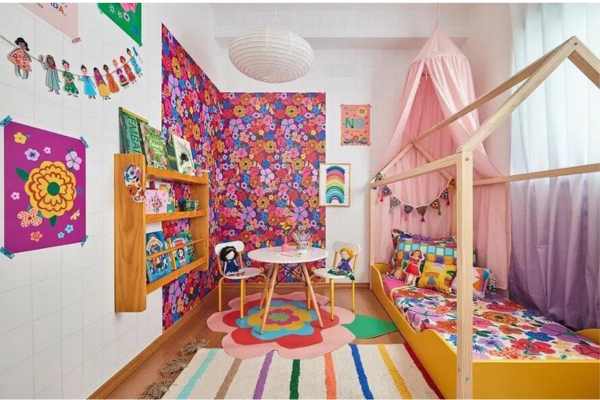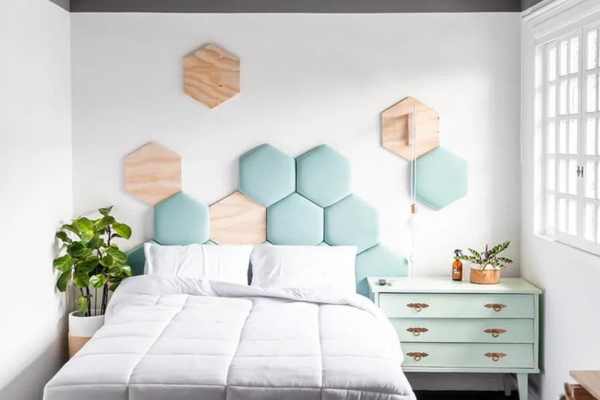Sharing a bedroom can be a challenging journey, but it’s also a unique opportunity to promote cooperation and connection among siblings.
In this article, we will delve into detailed strategies for creating a shared room that takes into account different personalities, encouraging a harmonious and inspiring space.
Let’s explore each topic more deeply, providing additional practical examples and creative ideas to make this environment truly unique.
1. Identification of Individual Preferences
Beyond asking about favorite colors, delve deeper into each child’s preferences. Discover their hobbies, favorite movies or characters, and even their dreams.
This deeper knowledge will help in creating a space that resonates with their unique personalities.
Practical Example:
If a child loves astronomy, incorporate bright stars on the ceiling, or if another is a superhero fan, use wall stickers representing their favorite characters.
2. Choice of Unifying Themes
To avoid divisions in the space, choose broad themes that allow individual customization. Themes like nature, travel, or adventures stimulate creativity and provide a unifying foundation.
Practical Example:
If the theme is travel, use a world map as a focal point on the wall, allowing each child to mark their favorite places.
3. Functional Space Division
Create a functional division of the room using furniture that also serves as visual dividers. Shelves and curtains can be practical solutions to separate study, reading, and resting areas.
Practical Example:
Use open shelves between the beds to display favorite books, special toys, and individual decorative items.
4. Coherent Color Palette
In addition to a general color palette, allow each child to choose a specific color to be added to the decor. This creates a visual connection between the shared space and individual preferences.
Practical Example:
If one child chose blue and the other yellow, incorporate these colors into cushions, bedding, and small decorative details.
5. Customization of Existing Furniture
Transform existing furniture to reflect individual tastes. Allow each child to add their personal touch, whether through painting, decorating with stickers, or even applying fabrics.
Practical Example:
Decorate the sides of bedside tables with adhesive paper representing each child’s hobbies or interests.
6. Family Art Gallery
Expand the art gallery on the wall to include not only drawings but also collaborative projects. It could be thematic murals or even a wall for artistic experiments.
Practical Example:
Encourage joint canvas paintings where each child contributes unique elements to the final artwork.
7. Smart Vertical Storage
Optimize space with vertical storage solutions such as shelves and hanging organizers. This not only keeps the room organized but also allows each child easy access to their belongings.
Practical Example:
Use hanging baskets to store toys, ensuring that each child has their designated space.
8. Bedding Personalization
Cushions and pillows can be simple means of personalizing the space. Encourage children to choose fabrics and patterns that express their individuality.
Practical Example:
Create decorative pillows together, choosing fabrics and sewing patterns that represent their styles.
9. Space for Study and Creativity
Create a shared study station but personalize each area to meet individual needs. This promotes independence and responsibility.
Practical Example:
Provide individual study tables but maintain a central table for collaborative projects and group activities.

10. Celebrating Personal Achievements
In addition to the achievement wall, create a dedicated space to display personal projects, recent drawings, and special moments. This highlights individual achievements and fosters a supportive environment.
Practical Example:
Install a photo line or a magnetic board to showcase recent artwork, certificates, and small mementos.
Keep reading our articles:
Adjustments to Accompany the Transition from Childhood to Adolescence
Incorporating Heroic Elements into Decoration
Conclusion: A Unified Space Amidst Diversity
Decorating a shared room doesn’t have to be a challenge. With smart strategies and practical projects, it’s possible to create a space that celebrates both differences and similarities among children.
Remember that collaboration is the key, and by involving children in the process, the room becomes not just a shared space but a vibrant expression of each child’s unique personality.
Invest in creativity and cooperation to turn this challenge into an opportunity for growth and harmony.


